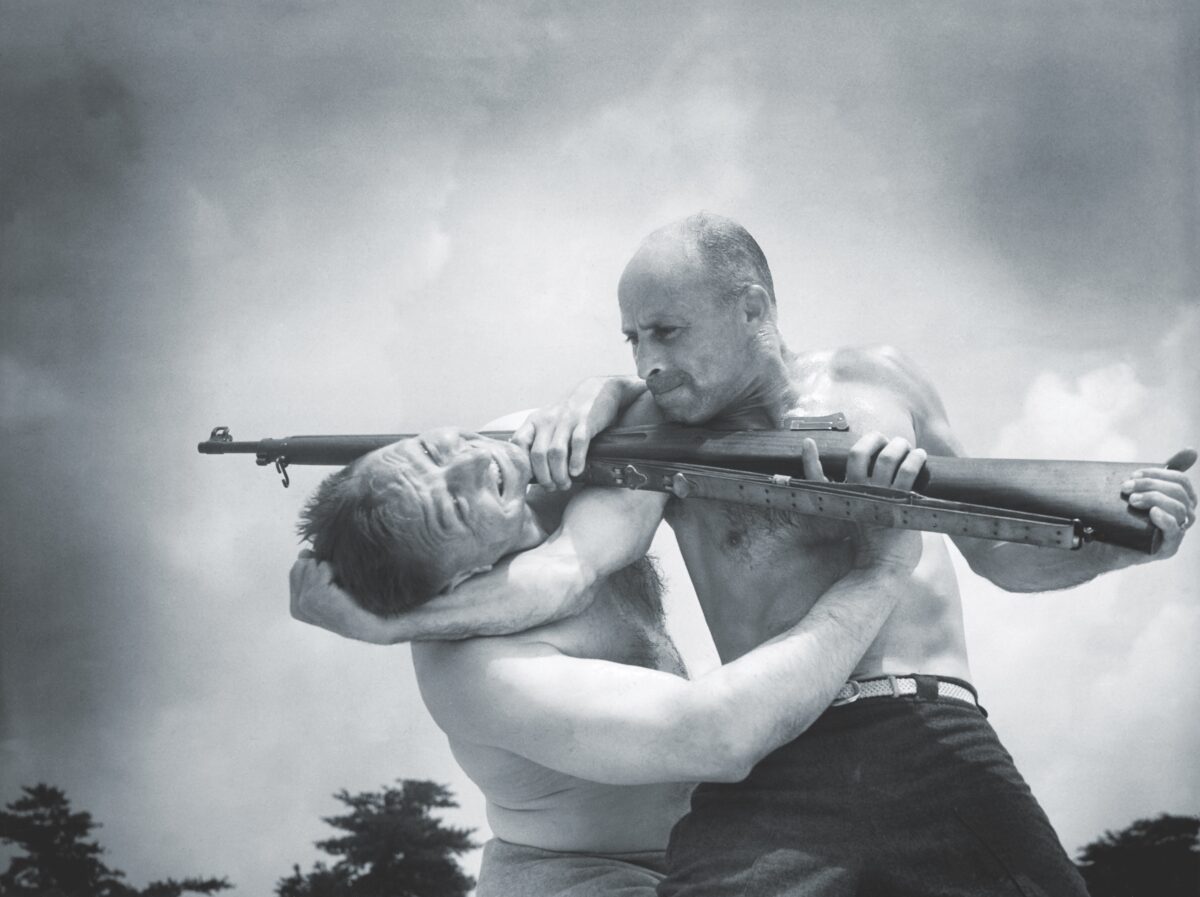Lecturing to a group of young U.S. Army Rangers on a field at Fort Meade, Maryland, in May 1942, U.S. Army lieutenant colonel Francois d’Eliscu ordered a trainee to level his rifle and bayonet and charge at him, full bore.
“Come on, boy, like you mean business!” d’Eliscu shouted. His voice was startlingly loud and sharp, especially considering that it came from such an elfin, exotic-looking figure. Just 5 feet 5 and weighing 136 pounds, d’Eliscu was in his mid-40s and had a shiny balding head and finely chiseled features. The “Little Professor,” as some called him, had an intense glare and animated gestures—almost like a French intellectual debating over coffee in a Left Bank cafe. He had several graduate degrees and had taught at prestigious American universities.
But d’Eliscu’s confident stance, with his sinewy arms and shoulders poking out of his shirt, gave a hint that the man of letters was also well-schooled in violent confrontations. His own weapon was a 6-foot length of sash cord.
The trainee lunged at his small target, the bare blade of his bayonet flashing. But d’Eliscu was a blur. Seconds later, the soldier lay flat on this back, trussed and unable to move for fear of strangling himself. D’Eliscu was unharmed, except for a patch of skin that the bayonet had shaved off his elbow as he’d disarmed his assailant.
After releasing the trainee, d’Eliscu continued his lecture. He proceeded to deride American-style boxing, with its rules barring foul blows and breaking clean from a clinch and its technique of striking with the fists. “Sportsmanship!” he snarled. If the men ever faced off against German or Japanese soldiers in close-quarters hand-to-hand combat, he told them, there were no rules, and other parts of the body—open palms, elbows, feet—were more effective for striking the vulnerable spots on an enemy’s body. “This—this—this,” d’Eliscu explained, demonstrating a series of strikes. “And he’s ruined.”

And then there was the sash cord, a seemingly innocuous everyday object that in d’Eliscu’s hands could disable or even kill. “His speed and skill seem magical,” wrote R. P. Harriss, a columnist for the Baltimore Evening Sun who was on hand to observe the demonstration. “This to make the victim speechless, this to blind…this to break the neck.”
It was a type of fighting that Harriss and most other Americans had probably never seen before. “Most of us still think of the American soldier as a two-fisted man who wouldn’t think of hitting below the belt,” Harriss wrote, “much less letting fly a kick to the crotch.”
D’Eliscu’s training was intended to provide American soldiers with the skills to counter the mysterious martial arts expertise that many believed Japanese troops possessed. By one account, d’Eliscu had actually purloined the fighting secrets of the Japanese when he attended a jujitsu demonstration while visiting Japan and had sneakily committed the intricate techniques to memory.
D’Eliscu was just one of the many martial artists the United States had pressed into service during World War II to hone the hand-to-hand combat abilities of American soldiers. According to Thomas A. Green and Joseph R. Svinth’s Martial Arts of the World: An Encyclopedia of History and Innovation, various service branches turned to experts ranging from boxing champion Jack Dempsey, who trained Coast Guard cadets, to Marine Corps knife-fighting expert J. Drexel Biddle, who popularized the Ka-Bar knife, and even professional wrestlers such as Charles “Dirty Dick” Raines and “Man Mountain Dean” (the ring name of Frank Simmons Leavitt), who taught their holds to army soldiers. The U.S. Office of Strategic Services, the predecessor of the CIA, had its own hand-to-hand fighting system, designed by British expert William E. Fairbairn, which emphasized techniques such as palm strikes and knee-to-groin attacks.
But even among that group, d’Eliscu stood out, with his colorful, slightly eccentric, intellectual persona and his unorthodox fighting system, a mix of dirty wrestling holds and Japanese jujitsu that eschewed techniques popular in boxing or wrestling competitions that had sporting rules. He also developed an extreme fitness regimen for his fighters that was brutal enough to make today’s CrossFit workouts look slothful by comparison. In the process, he became a sought-after subject for feature writers and military propagandists, who portrayed him as a sort of World War II Bruce Lee—a martial arts genius who could train American soldiers to give the Japanese a taste of their own medicine. Few knew that d’Eliscu’s exotic persona was something he’d carefully constructed, down to adding a “d” and an apostrophe to his surname, in the fashion of French nobility. But his fighting prowess wasn’t all hype. In the course of the war, d’Eliscu would demonstrate his skills in real combat, with lives on the line.
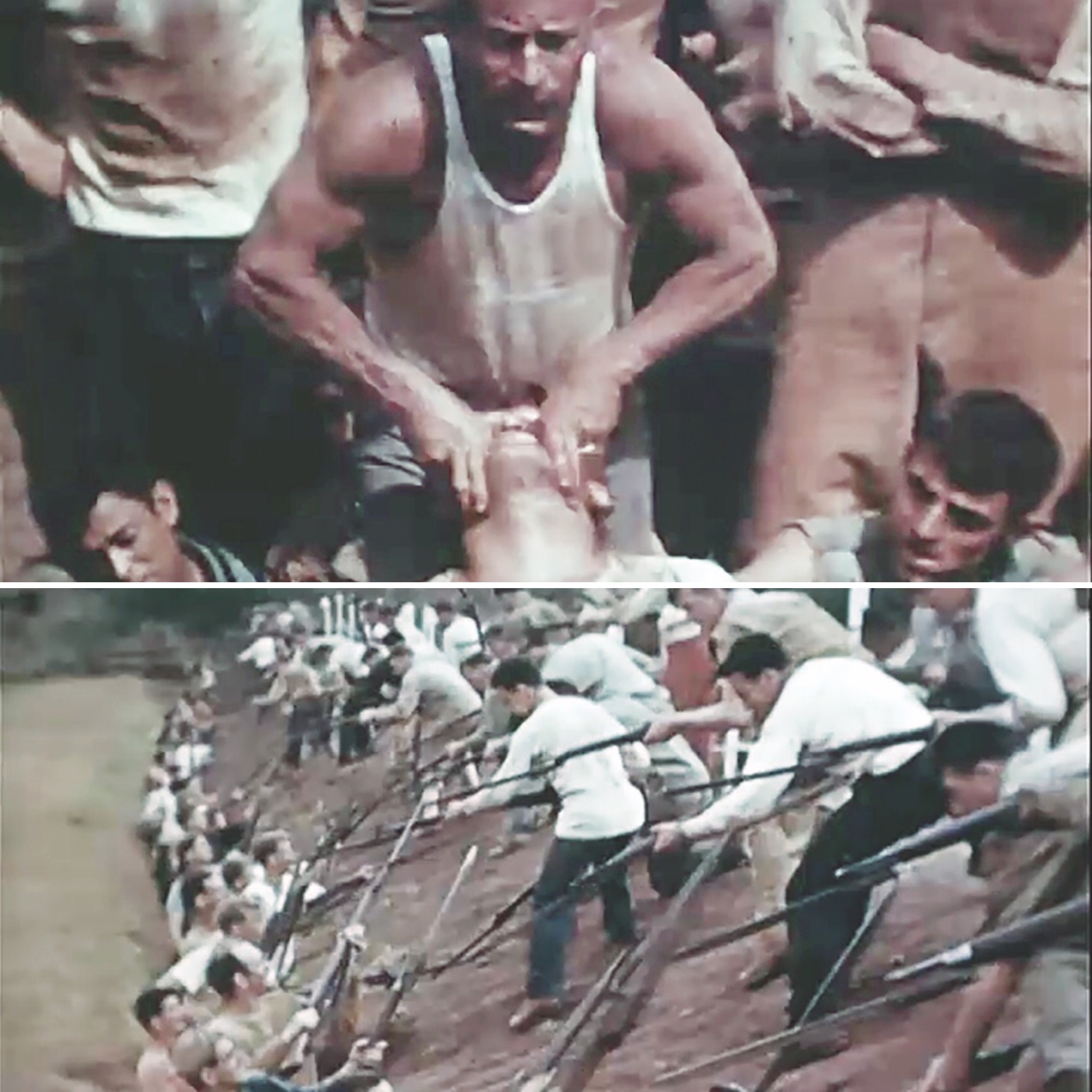
“He can kill with a flick of his elbow—maim with a pinch of his fingers,” explained a 1942 profile of d’Eliscu in Yank magazine, which described him as one of the toughest men alive. It helped that d’Eliscu evidently liked to demonstrate his techniques by taking on much larger opponents. One of his favorite partners was army major Tod Goodwin, a former New York Giants football player, who stood 6-foot-6 and outweighed d’Eliscu by 50 pounds. Yank noted that it was so dangerous to tangle with d’Eliscu that “an ambulance with three Medical Corps doctors was in attendance at all sessions.”
Harriss, who observed d’Eliscu in action, noted that nobody at Fort Meade who’d seen the Little Professor render opponents helpless ever expressed any doubts about the effectiveness of his techniques. For Harriss, the big question was whether enough soldiers would be capable of learning them. “It is plain that he is far above normal in speed, skill, aptitude, and coordination,” he wrote. But Harris observed that a few carefully picked men, “intensely trained in this fashion,” might be valuable as hit-and-run raiders. Some of d’Eliscu’s sash cord techniques were designed for precisely that purpose—sneaking up behind an enemy sentry and rendering him “helpless and terrified.”
The press accounts of d’Eliscu’s techniques must certainly have reassured Americans who feared the brutal tactics of the Japanese. According to a 1943 article on d’Eliscu in Popular Science, the enemy soldiers knew “all the bone-breaking tricks of judo” and even supposedly carried small knives that, in the event of capture, they could use to slit the throats of unwary American guards. But thanks to d’Eliscu’s instruction, the profile in Yank magazine had pointed out, “the Rangers…actually know more about judo than the average Japanese.”
D’Eliscu’s past was in some ways as mysterious as his martial arts techniques. He apparently told Harriss that he spent some of his early years in France as well as in Japan, and an Associated Press profile once described him as having inherited his fighting prowess from a father who was an expert swordsman. In reality, he was born on November 10, 1895 in New York City, the son of a French businessman, Frank Eliscu, and his Romanian wife, Sophia, who had emigrated to the United States seven years earlier. His younger brother, Edward, would go on to become a famous Hollywood songwriter. In his 2001 autobiography With or Without a Song, Edward Eliscu recalled his teenage brother as “an introverted, buck-toothed loner” who went by the name Milton Eliscu.
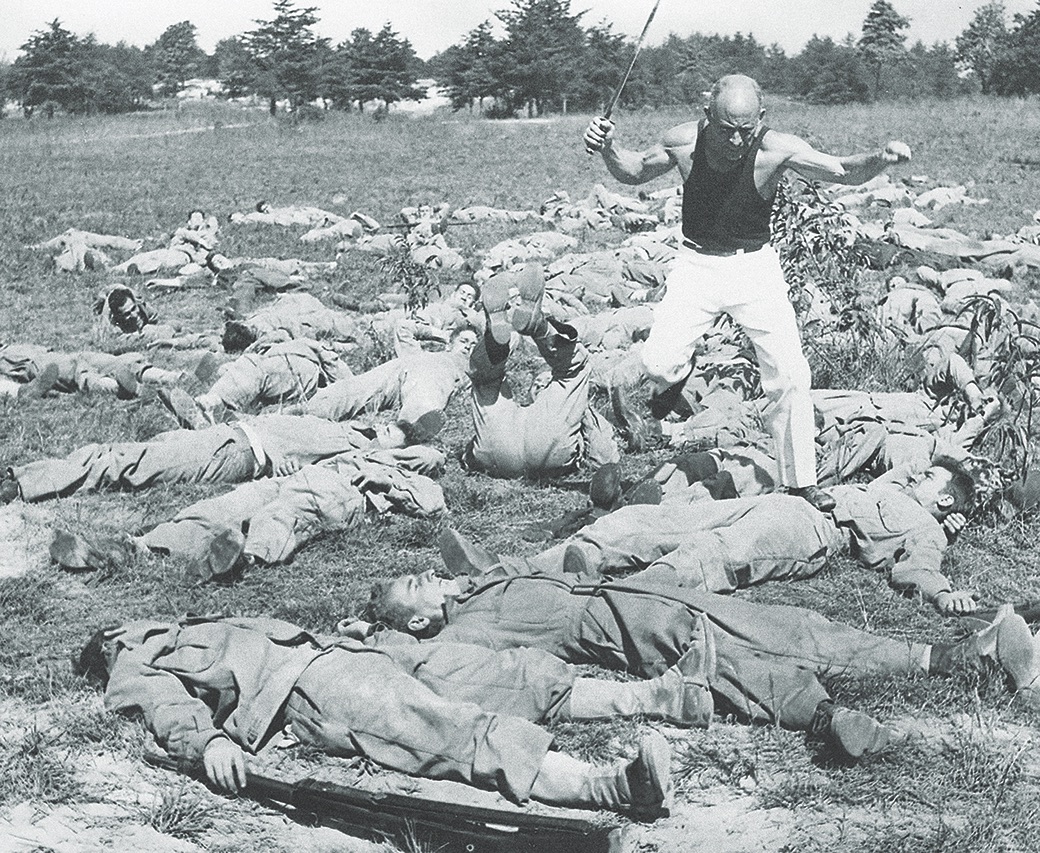
At one point the future martial arts expert and military officer got a job stacking books at the 135th Street public library in Harlem, according to Edward. But after Milton returned home one evening with torn clothes and a bloody forehead, which he claimed he had received after being beaten by a mob in a racial confrontation, he began to change. Though he’d never had much interest in exercise or sports, as a senior at DeWitt Clinton High School, he entered a cross country race and, surprisingly, finished first. After graduation he entered the Savage School for Physical Education, a teachers college off Columbus Circle, and gradually withdrew from his family, keeping them in the dark about the new identity he was forging as a physical fitness buff and coach for local high school football teams. Around that time, items in the sports pages of the Brooklyn Daily Eagle show that he had Frenchified his last name with the “d” and apostrophe. When d’Eliscu graduated from Savage in 1917, Edward and his mother attended the event and were startled to see him give an exhibition of his gymnastic skills. “Milton’s skill and grace left me breathless,” Edward later wrote. “A gymnastic Nijinsky, he outclassed his peers.”
Soon after that, Edward Eliscu recalled, d’Eliscu gathered a few belongings and told his family that he was off to join the U.S. Army. His mother, lamenting that Milton would never return, explained that he had converted to Christianity. Edward got another fleeting glimpse of his brother a month or so later, when he noticed him in a military parade, wearing a mock bandage on his head as he bore a stretcher in a medical unit and “marching as though the war depended upon him alone.”
But d’Eliscu didn’t see combat in World War I. Instead he served at Fort Gordon in Georgia, where, according to local newspaper accounts, he supervised sporting activities and organized boxing and wrestling competitions for the soldiers. According to an Associated Press profile published decades later, he also worked as a bayonet instructor.
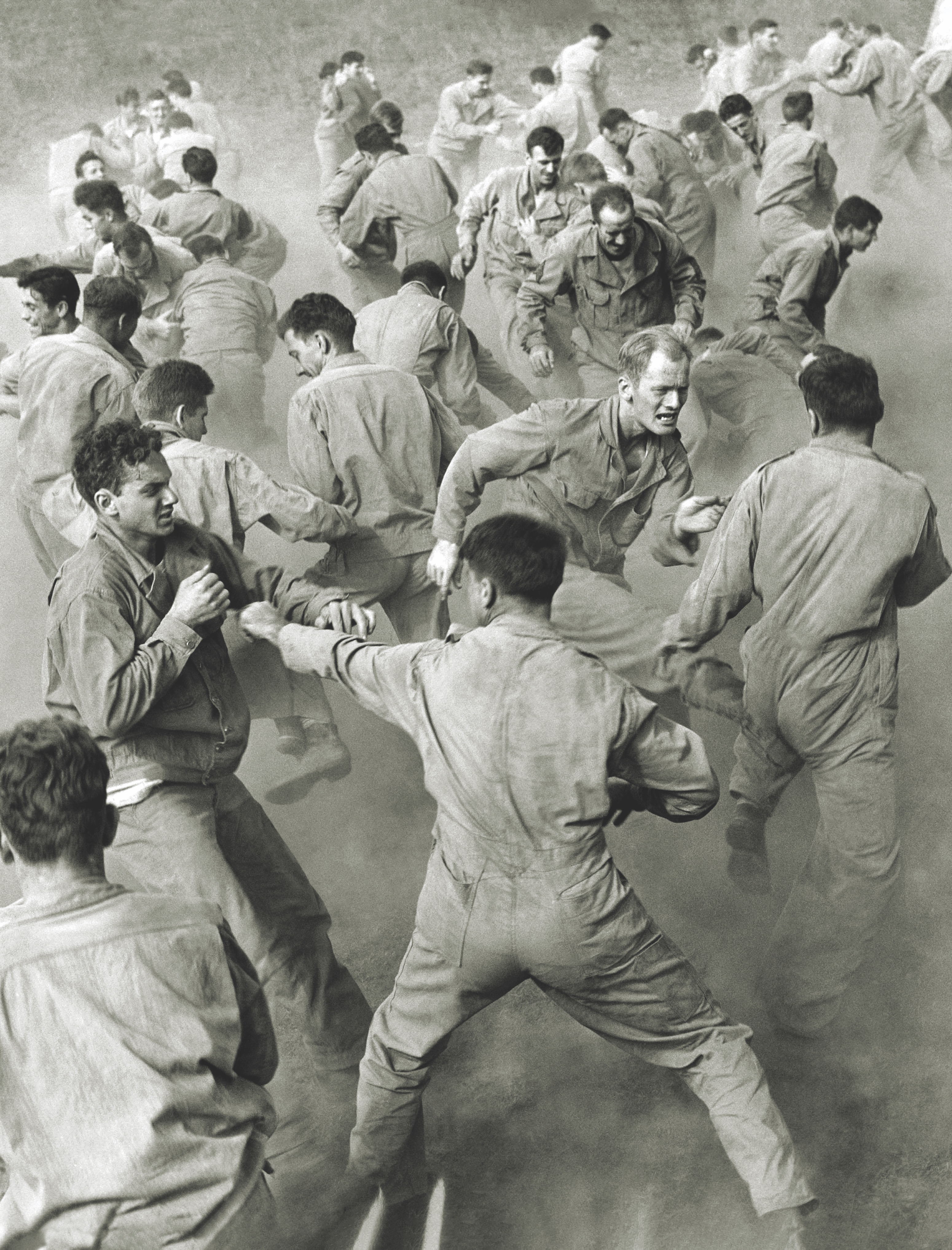
After the war d’Eliscu earned a bachelor’s degree in education, a master’s in sociology from the University of Pennsylvania, a second master’s in science from Columbia University, and later a doctorate from New York University. He also coached various collegiate sports, including varsity wrestling at New York University.
While he taught physical education and coached, d’Eliscu had a side career as a radio personality. He hosted a pair of early morning daily exercise programs on radio station WIP in Philadelphia, and he once donned a deep-sea diving suit to broadcast a show from the bottom of the ocean off Atlantic City—a stunt that nearly ended in disaster when one of his weighted shoes came off during the broadcast and he had to hang on for dear life in the strong current. “When I came up, I found out that everybody thought I was dead,” he recalled with amusement. “It seems that the main tube from the microphone broke, and I was there talking away, and all that came out for the broadcast was glug-glug-glug-glug.” He also dabbled in sportscasting, working the first Gene Tunney–Jack Dempsey fight in Philadelphia in 1926. In his spare time, he taught fly-fishing techniques at Sheepshead Bay in Brooklyn.
In the late 1920s d’Eliscu moved to Honolulu, where he became a newspaper sports columnist and organized amateur boxing competitions. He also helped to manage the U.S. Olympic swim team that featured Johnny Weissmuller in his premovie days. For a time, d’Eliscu also reportedly acted as the star swimmer’s personal manager, turning down early movie offers that didn’t seem sufficiently lucrative. “Even granting that he would aggregate more than $25,000 the first year, which I know he would, there is no surety that he would go over in the movies or on the stage,” d’Eliscu told a newspaper interviewer. He preferred instead to see Weissmuller become a professional swimming teacher and earn a living giving demonstrations and lectures, though Weissmuller did end up going into the movies and becoming an overnight star with the 1932 film Tarzan the Ape-Man.
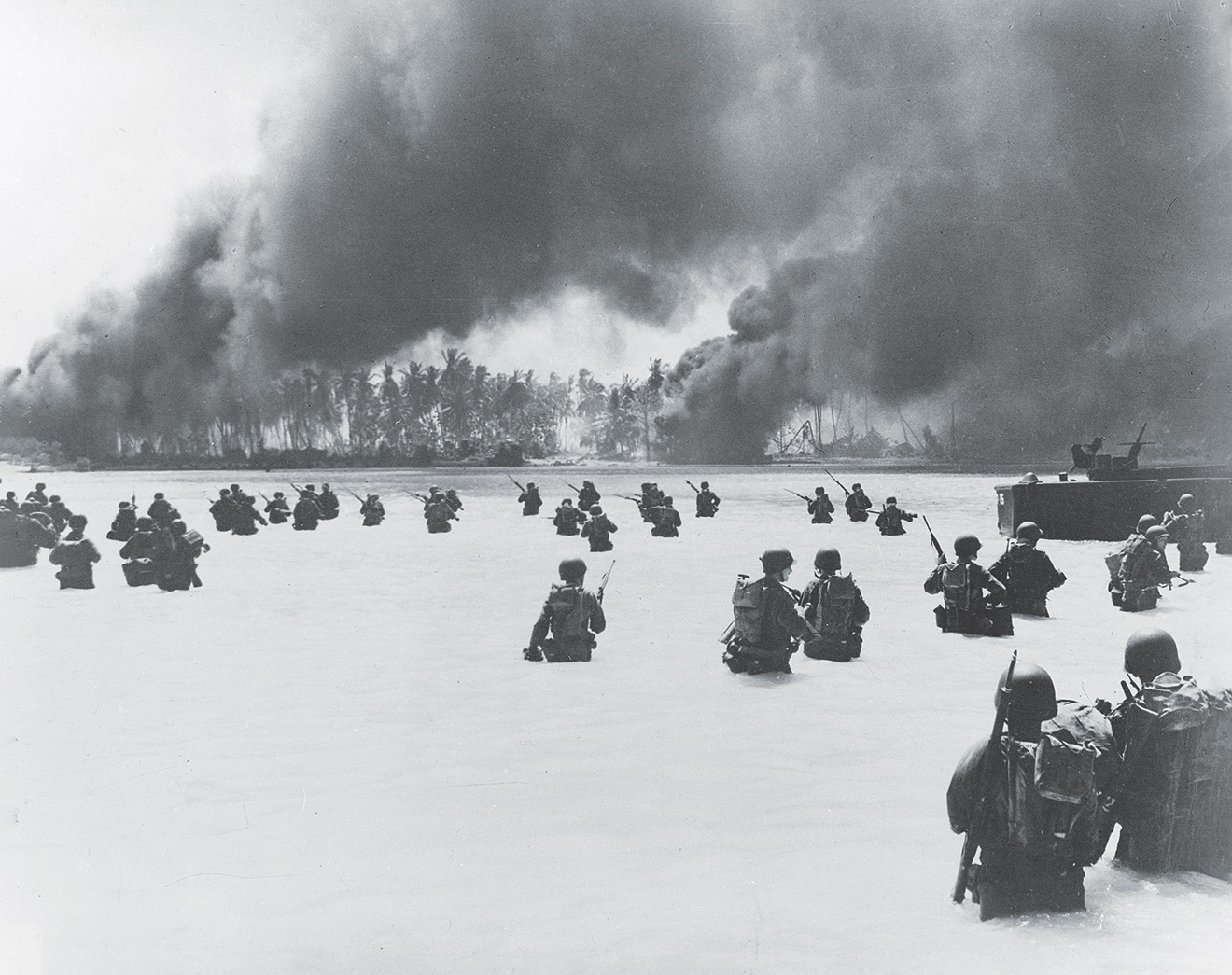
D’Eliscu returned to Philadelphia in the early 1930s to serve as an athletic director, a track coach, and an instructor in public health at the Philadelphia College of Osteopathic Medicine.
It’s not clear where d’Eliscu acquired his apparent expertise at jujitsu. A 1919 article in the Philadelphia Inquirer mentions his participating in a jujitsu exhibition with Leo Pardello, an Italian heavyweight, to raise money for erecting a building for the American Legion. Many articles about d’Eliscu and other military martial artists portrayed Japanese hand-to-hand fighting techniques as a closely guarded cultural secret and inherently underhanded. In reality, according to Green and Svinth’s history of martial arts, Westerners began going to Japan to study jujitsu in the late 1800s. After that, Japanese immigrants in the early 1900s spread judo—the modern martial art that evolved from jujitsu—throughout Europe and the United States. In the 1920s, one judo master, Taguchi Ryoichi, taught the art at Columbia University, one of the institutions that d’Eliscu attended.
The 1942 profile of d’Eliscu in Yank magazine offers a more colorful account. While on a trip to Tokyo with the U.S. swimming team in 1928, the story goes, d’Eliscu was invited to attend exhibitions at two judo schools, where he was invited to give a demonstration of Western wrestling techniques. The Japanese photographed his moves so that they could study them later. After d’Eliscu finished, he bowed to the head of the school. “I have heard so much about your own form of wrestling,” he told the Japanese instructor. “Would you honor me by demonstrating some of your more complicated holds in return?”
At first the instructor was reluctant, but d’Eliscu’s flattery eventually won him over, and he demonstrated “his complete bag of tricks,” as the article put it. When it was over, d’Eliscu thanked him, bowed, and left. Fourteen years later, he supposedly taught some of the same Japanese techniques to American soldiers.
After World War II broke out, d’Eliscu—by then in his late 40s—rejoined the military. In early 1942 he was sent to Fort Meade, Maryland, to train elite Army Rangers. To that end, d’Eliscu devised an almost inhuman training routine. Each day began with a two-mile run, followed by a 600-yard obstacle course, featuring a 15-foot-deep trap with smooth sides, from which the trainees had to find a way to get out. “If they can’t get out, let ’em stay there,” d’Eliscu explained to a reporter. One officer stayed in the trap for five hours before he finally managed to escape.
But that was just the warm-up. D’Eliscu put the men through unconventional drills in which they had to freeze in position on his command or hang from tree limbs. Then came pull-ups and other strength exercises. He also devised strange torments designed to boost soldiers’ fortitude. A photograph from Fort Meade shows d’Eliscu running over the supine bodies of his trainees, stepping on their abdomens as he makes his way across the field.
Then it was time for fighting, which included anything-goes grappling and bare-knuckle boxing, with Medical Corps personnel on hand to tend injuries. To get his men accustomed to all-out, no-rules fighting, one of d’Eliscu’s tricks was to have trainees put on fatigues without rank insignias. Then he’d order them to get into a low crouch and at his command begin fighting each other from that position. After they pushed, pulled, and threw a few punches, the trainees usually ended up falling together in a chaotic heap; they had to roll to get clear of one another’s bodies and avoid injury.
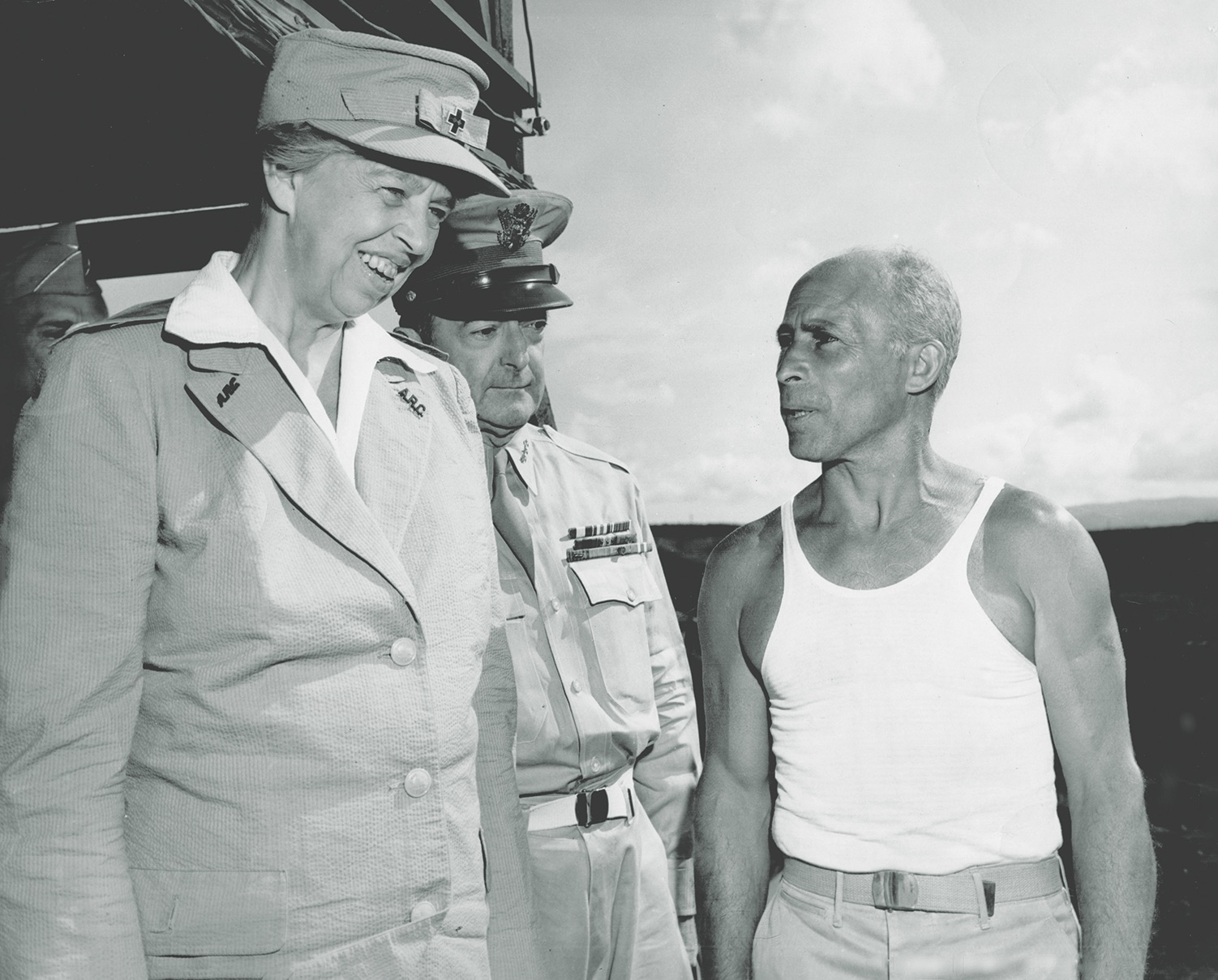
While d’Eliscu included Western-style boxing in the troops’ training regimen, he wasn’t keen on it as a fighting technique in the field. Instead, he wanted his fighters to employ more of their bodies and use a wider range of disabling techniques. “Boxing—bah!” he once told his students. “Swing your right elbow like this, to crush his windpipe. Slap him with your other hand. Then follow through with the knee or abdomen.” His methods were sufficiently unorthodox for Life magazine to send a photographer to shoot a June 1942 spread on what it labeled his “dirty fighting” system.
But for all his intensity about teaching lethal techniques, d’Eliscu also sometimes displayed a quirky sense of humor. As Harriss witnessed, he once stopped suddenly in the middle of a demonstration and segued into an unsettling monologue. “Civilization! Christian ethics! Human progress!” d’Eliscu exclaimed. “All our studies in sociology, education, the humanities—and then we’re right back to the beast. What a world!”
On another occasion, d’Eliscu paused the training for some self-contemplation. “The killer. That’s what they call me here, and I’d rather go trout fishing any day,” he told Harriss. “Kiddies, doggies, I love them. But c’est la guerre!”
U.S. Army leaders were sufficiently impressed with d’Eliscu’s fighting and fitness program that in early 1943 they sent him back to Hawaii to set up another school to prepare Rangers for jungle warfare in the brutal island campaign in the Pacific.
D’Eliscu set up a secret training site in the mountains that became known as the Mayhem Bowl, replete with ravines and dense brush. According to a United Press account that concealed the school’s exact location, a three-mile course there had trainees running up and down hillsides, navigating water hazards, scaling a wall, and running up a metal slide that was greased to make the going more difficult. For a section of the course, trainees had to crawl a half mile with no part of their bodies more than 24 inches off the ground, an effort that typically took an hour.
A reporter for the Honolulu Advertiser described the training course as “sort of a mountain goat’s nightmare, covered with the three feet of mud and water.” To make the battlefield frighteningly realistic, d’Eliscu used actual flamethrowers and tear gas as hazards. “Fire and gas are a little unorthodox,” he explained. “But then, so is war.”
“My job was to make worms and turtles out of the men,” he later told a newspaper interviewer.
The training in Hawaii was even more grueling than that at Fort Meade. Among other ordeals, d’Eliscu put trainees through a particularly brutal exercise that required teams of men to lift and carry a 1,000-pound log up a steep hill multiple times—and then proceed to hand-to-hand fighting drills. He also subjected them to life-threatening dangers, planting fields with explosives and using live ammunition, flamethrowers, and bare bayonets in training, to instill in them what he called “sane appreciation of a knife and a bullet.”
The regimen was so hazardous that by March 1943 trainees in the program had already suffered 1,600 injuries. But d’Eliscu didn’t seem concerned. “Better to have a few men hurt now,” he said, “than to have them killed needlessly later.”
D’Eliscu even went through the workouts alongside his trainees. “I went through every test with the men,” he said, “never asking them to do a thing I wouldn’t or couldn’t do.”
Many prominent people visited the Hawaii training school. One archival photo shows a smiling First Lady Eleanor Roosevelt in an American Red Cross uniform, towering over a stern-looking d’Eliscu in a sleeveless white undershirt. He also apparently taught a few judo techniques to Senator Albert B. Chandler of Kentucky, who appears in another photo throwing d’Eliscu over his shoulder.
While he led the training, d’Eliscu somehow also found time to write the instructional book How to Prepare for Military Fitness, published in 1943 by W. W. Norton & Co.
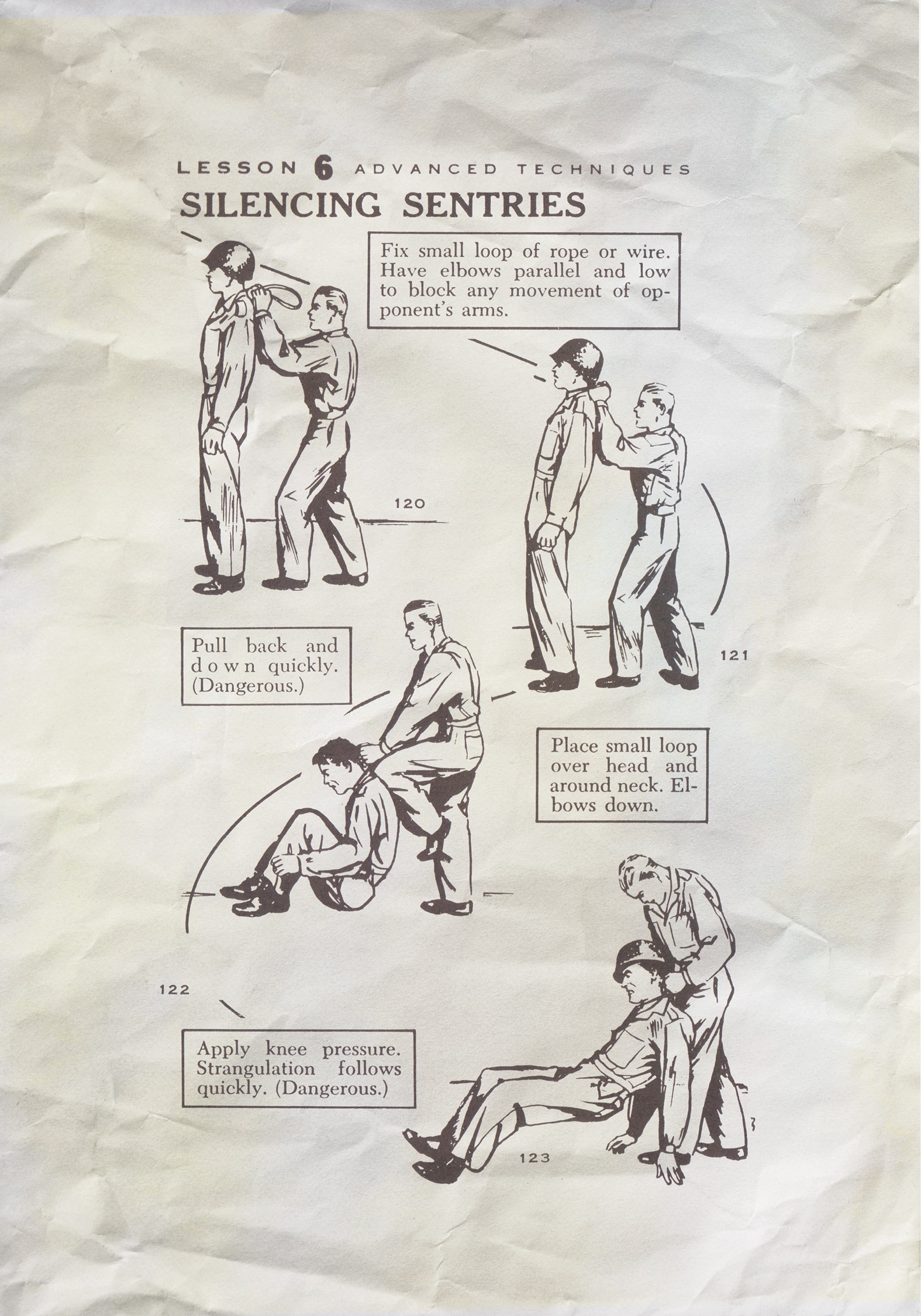
And of course, the Rangers learned d’Eliscu’s sash cord techniques. A story in Popular Mechanics described one of his favorite moves. After front-kicking an enemy soldier in the stomach to knock him to the ground, the American soldier was to quickly loop the rope around his adversary’s knees and draw the loose ends around his neck. “If the victim doesn’t strangle himself with his own struggles, the process is hastened by sitting on his face and pushing forward on his knees,” the magazine explained.
D’Eliscu believed that the sash cord was such an effective weapon that he predicted it would eventually become a standard part of every soldier’s equipment. By one account, he developed more than two dozen different techniques for strangulation.
“Our attitude and personal feelings in regards to sportsmanship and fair play must be changed,” d’Eliscu wrote after the war. “Strangling and killing are remote from our American Teachings, but not to our enemies.”
But teaching fighting techniques wasn’t enough for d’Eliscu. To him, it was important to see whether they actually worked in life-and-death situations. Despite his importance as a trainer for the U.S. war effort, he got his superiors to send him briefly into combat.
In November 1943 d’Eliscu went ashore with landing forces at Makin Atoll in the Gilbert Islands. As the men in his patrol made their way inland, they were pinned down by sniper fire and had to take cover.
D’Eliscu was walking behind a tall lieutenant who was suddenly hit in the arm by a sniper in a tree, according to a reconstruction of the incident by Ray Coll Jr., a correspondent for the Honolulu Advertiser, who interviewed wounded soldiers evacuated to Oahu. D’Eliscu fired on the sniper and hit him, causing him to fall to the ground. According to Coll’s account, d’Eliscu rushed to the Japanese soldier, used the disarming techniques he’d taught at Fort Meade and in Hawaii to take the man’s rifle and knife away, and quickly killed him. That heroic act led to d’Eliscu being awarded the Silver Star three months later.
By July 1944, d’Eliscu was back in New York, where some of Edward Eliscu’s friends who worked for the Office of War Information were startled to spot a bald, wiry army officer with a familiar last name, giving a speech at an armory in which he castigated black marketeers and criticized unions for making trouble during the war. “So Milton Eliscu, born in Brooklyn, raised on the Lower East Side and Harlem, had become Lt. Col. M. Francois d’Eliscu, leader of the rough Rangers,” Edward Eliscu wrote in his memoir, with more than a trace of bitterness.
D’Eliscu was sent to France to organize training at the officers’ candidate school at Fontainebleau. He was made a member of the Legion of Honor and awarded the Croix de Guerre. He also wrote a manual, Hand to Hand Combat (1945), that outlined his techniques for hip throws, joint locks, eye-gouging finger strikes, shin kicks, grappling on the ground, and defensive tactics against knife attacks. (A reprint eventually became available on the civilian market.) “Practice for speed and perfection,” d’Eliscu admonishes in it. “Be cautious. Do not take advantage of your partner in practice. Save your own personal techniques for the enemy!”
After the war d’Eliscu became athletic director at the University of Hawaii. But the United States soon needed him again. He served in the Korean War and was then sent to Ankara, Turkey, to train the nation’s infantry and paratroops as part of a foreign aid program. While there, he and his wife got a chance to tour Europe, and near the end of his tour they spent some time living in the Turkish seaside town of Izmir before they returned to the United States in 1953. D’Eliscu then headed to Fort Bragg, North Carolina, where he helped train U.S. troops, including commanding a force of paratroops who used guerrilla tactics against a National Guard battalion in a simulated battle on a mountainside in the middle of a blizzard.
D’Eliscu’s fighting techniques were eventually supplanted by even more sophisticated ones. Today, for example, Army Rangers learn a fighting system that blends techniques from wrestling, boxing, Muay Thai, and judo with weapons skills from Kali, a Filipino martial art. The change in mindset that d’Eliscu brought to hand-to-hand combat, which may have been his biggest contribution to the military, endures.
After his retirement from the army in 1954, d’Eliscu and his wife resettled in Siesta Key, Florida, near Sarasota. He spent his last years teaching power boating safety courses. He died in 1972, at age 76. His brother Edward learned of his death when someone mailed him a newspaper obituary. Edward wrote in his memoir that he didn’t grieve for d’Eliscu, whom he felt had turned his back on his family, but acknowledged that his brother had accomplished his life’s objectives. He had become “the leading authority on military fitness, a triple Rambo—with a life like a jigsaw puzzle only he could have put together.”

